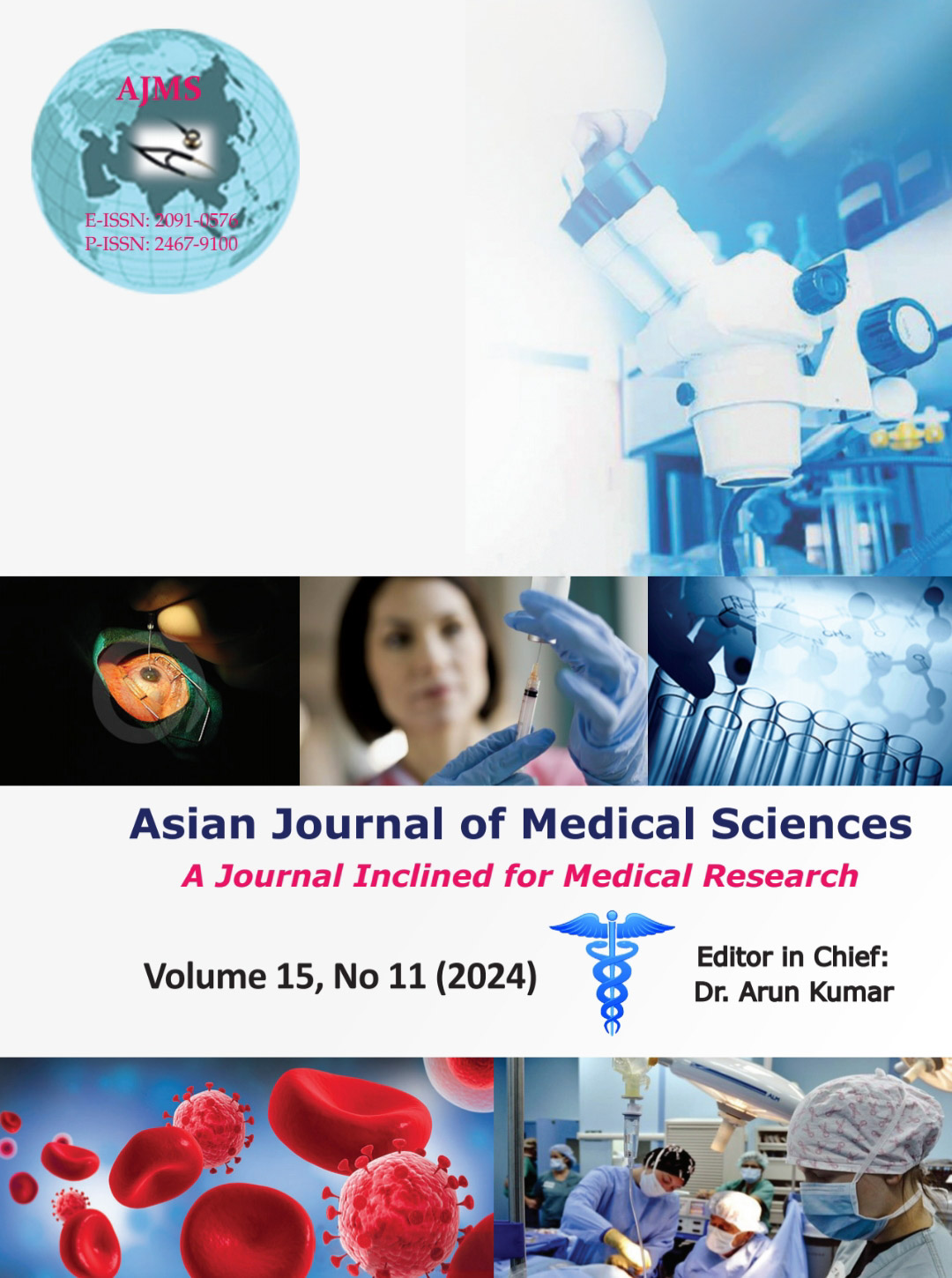Clinico-bacteriological profile of lower respiratory tract infections in a tertiary care hospital in Kolkata – A cross-sectional and observational study
Keywords:
Lower respiratory tract infections; Risk factors; Anti-microbial resistance pattern; Respiratory pathogensAbstract
Background: Lower respiratory tract infection (LRTI) is the most common infection causing significant mortality with a 3–5% death rate in adults. The emerging nature of antimicrobial resistance to pathogens makes its treatment more challenging and complicated for physicians.
Aims and Objectives: The study was designed to obtain a comprehensive insight into the microbial profile and resistance patterns of the isolated pathogens in LRTI in a tertiary care hospital in Kolkata.
Materials and Methods: The cross-sectional observational study was carried out in the Microbiology Department of N.R.S Medical College from January to December 2021. Specimens collected from 782 clinically suspected LRTI cases were processed as per standard laboratory protocol following clinical and laboratory standard Institute guidelines.
Results: Out of 782 respiratory samples, 47.83% showed significant bacterial growth. The major risk factor was found to be type II diabetes mellitus (47.44%) followed by chronic obstructive pulmonary disease (36.57%) and smoking (21.35%). 85.56% growth was monomicrobial and Gram-negative organisms (88.50%) predominated. Klebsiella pneumoniae (36.90%) was the most predominant Gram-negative bacilli followed by Pseudomonas aeruginosa (17.11%) and Acinetobacter species (13.90%). Staphylococcus aureus was the predominant Gram-positive isolate (7.49%). Gram-negative organisms showed the highest resistance to penicillin and cephalosporins, whereas the lowest resistance in carbapenems. Piperacillin/tazobactam and levofloxacin showed good susceptibility. Linezolid was the most susceptible antimicrobial followed by vancomycin in the case of Gram-positive organisms. Extended-spectrum β-lactamase was detected as the mechanism of resistance in 31.12% of cases and carbapenemase was detected in 19.64% of cases.
Conclusion: Increasing antimicrobial resistance and varied bacterial etiology make it necessary to develop appropriate antibiotic policy and implement antimicrobial stewardship for effective and prompt therapy.
Downloads
Downloads
Published
How to Cite
Issue
Section
License
Copyright (c) 2024 Asian Journal of Medical Sciences

This work is licensed under a Creative Commons Attribution-NonCommercial 4.0 International License.
Authors who publish with this journal agree to the following terms:
- The journal holds copyright and publishes the work under a Creative Commons CC-BY-NC license that permits use, distribution and reprduction in any medium, provided the original work is properly cited and is not used for commercial purposes. The journal should be recognised as the original publisher of this work.
- Authors are able to enter into separate, additional contractual arrangements for the non-exclusive distribution of the journal's published version of the work (e.g., post it to an institutional repository or publish it in a book), with an acknowledgement of its initial publication in this journal.
- Authors are permitted and encouraged to post their work online (e.g., in institutional repositories or on their website) prior to and during the submission process, as it can lead to productive exchanges, as well as earlier and greater citation of published work (See The Effect of Open Access).




